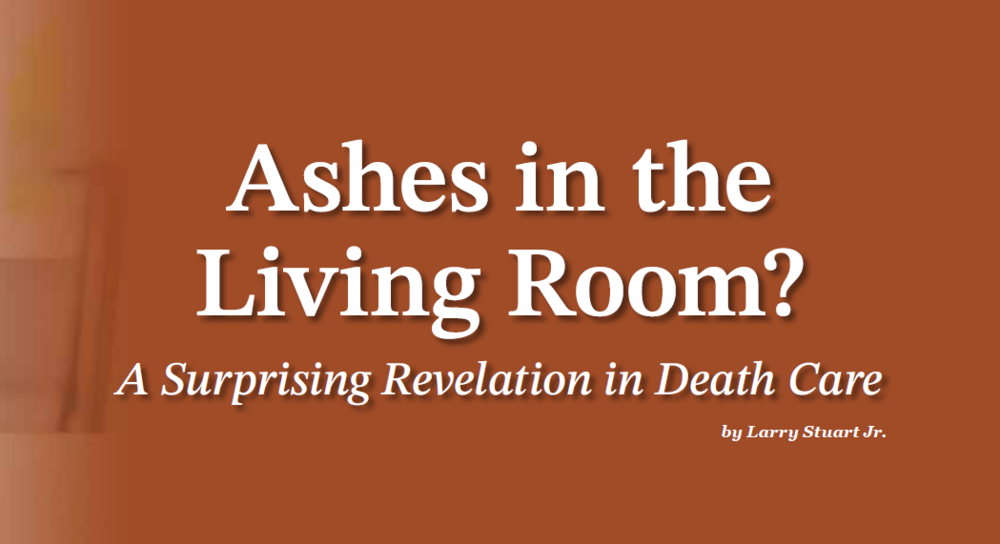(404) 312-6640
Ashes in the Living Room? A Surprising Revelation in Death Care
WHOSE ASHES ARE WE TALKING ABOUT?
Parents top the list, accounting for 39% of ashes held in homes, followed by extended family, friends, or others at 30%. Grandparents make up 20%, siblings or children account for 18%, and spouses or partners round out the list at 14%. Here’s another surprising tidbit: Over half (51%) of the ashes in U.S. households belong to veterans.
WHY CREMATION? IT’S NOT JUST ABOUT MONEY
When it comes to why cremation was chosen, 54% of respondents cited personal preference. Other reasons included cost-effectiveness (23%), sustainability (11%), or professional recommendation (4%). Interestingly, many decisions were made by the deceased themselves (47%), while others were collaborative (24%), or made by surviving family members alone (29%). Anecdotes reveal that some decisions came down to pre-planning the family didn’t know about—or, in more challenging cases, family dysfunction or desperation.
COMFORT OR CONUNDRUM? LIVING WITH ASHES
So how do people feel about keeping ashes at home? The study revealed a range of emotions. For those who inherited remains, the most common sentiment was “Comforting presence” (31%), followed by “Sad reminder” (18%) and “Temporary solution” (14%). Interestingly, those who actively decided on cremation were more likely to describe the ashes as a “Joyful reminder” (24%) compared to those who inherited them (19%). Very few reported feeling burdened by the ashes—just 5% of those who inherited them and 4% of those who decided.
GENERATIONAL INSIGHTS: DIFFERENT PERSPECTIVES ON MEMORIALIZATION
Peeling back the layers even further, the study found generational differences in attitudes. Older generations, like Boomers and the Silent Generation, are generally more prepared and knowledgeable about scattering rules. In contrast, younger generations—Millennials, Gen X, and Gen Z—express a stronger desire to learn about their options. They’re also more likely to prefer having a service to honor their loved ones, while older generations lean toward smaller or no services at all. This challenges the stereotype that younger people are less interested in rituals.
THE TAKEAWAY FOR THE PROFESSION
For professionals in death care, these insights are invaluable. They highlight the evolving needs of families, the importance of accessible information, and the potential for creative solutions in memorialization. As cremation continues to rise, so too does the responsibility to support families in navigating this deeply personal, and increasingly common, experience.
So, the next time you walk into someone’s home, consider this: there’s a 1-in-4 chance that someone’s loved one is quietly resting on a shelf nearby. And for death care professionals, that’s not just a statistic—it’s a call to action.

Larry Stuart Jr. is the founder and principal at Raven Plume Consulting, a firm dedicated to transforming cremation and funeral service operations through rigorous standards, operational integrity, and compassionate care. With over three decades of experience in the funeral profession—including leadership roles in both independent funeral homes and large-scale cremation operations—Larry brings unmatched depth and perspective to the complexities of modern death care.






Comments